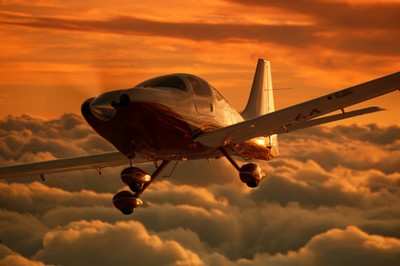Aero-Tips!
A good pilot is always learning -- how many times have you heard
this old standard throughout your flying career? There is no truer
statement in all of flying (well, with the possible exception of
"there are no old, bold pilots.") It's part of what makes aviation
so exciting for all of us... just when you think you've seen it
all, along comes a scenario you've never imagined.

Aero-News has called upon the expertise of Thomas P. Turner,
master CFI and all-around-good-guy, to bring our readers -- and us
-- daily tips to improve our skills as aviators, and as
representatives of the flying community. Some of them, you may have
heard before... but for each of us, there will also be something we
might never have considered before, or something that didn't
"stick" the way it should have the first time we memorized it for
the practical test.
It is our unabashed goal that "Aero-Tips" will help our readers
become better, safer pilots -- as well as introducing our
ground-bound readers to the concepts and principles that keep those
strange aluminum-and-composite contraptions in the air... and allow
them to soar magnificently through it.
Look for our daily Aero-Tips segments, coming each day to you
through the Aero-News Network. Suggestions for future Aero-Tips are
always welcome, as are additions or discussion of each day's tips.
Remember... when it comes to being good pilots, we're all in this
together.
Aero-Tips 03.16.06
Assuming ignition takes place correctly, and there’s
sufficient fuel flow, power development depends entirely on the
amount of air available for combustion. In most cases we control
power by adjusting the air control -- the throttle -- and only
fine-tune power with fuel flow.

This creates an obvious limitation: as an airplane climbs,
there’s less ambient air available. Almost as soon as
aeronautical science discovered this, engineers worked to create
what were originally called "altitude engines" -- engines that
could develop sea-level (or greater) power at higher altitudes.
Supercharging
A supercharger is an engine-driven compressor that provides
additional induction air pressure for more power than would
normally be available (non-supercharged engines are referred to as
"normally aspirated"). The compressor may be driven by a gears from
the engine’s crankshaft, or (in more modern applications)
spun via a linkage to a turbine in the engine’s exhaust
manifold. The greater the exhaust flow, the more power available
through what’s called a "turbocharger."
(Note: The most correct terminology for "turbocharger" is
"turbo-supercharger" -- a supercharger employing an exhaust-driven
turbine. At least one engine manufacturer, Teledyne Continental
Motors, acknowledges this with its engine designators, these
engines identified with the suffix TS).
There are several different means of manually or automatically
controlling turbocharger output, depending on the specific
engine’s design. Regardless of design, supercharging creates
the ability to boost induction air pressure for more power than
would be normally available.
(Note: Over the years a number of engine designs, both
factory-built and as modified in the aftermarket, have been
designed with scaled-back superchargers that provide only sea-level
power at altitude. These are unofficially known as
"turbonormalized" engines).
Aero-tip of the day: Know what’s meant by
supercharging, turbo-supercharging and turbonormalizing -- all of
them "altitude engines."
 Bolen Gives Congress a Rare Thumbs-Up
Bolen Gives Congress a Rare Thumbs-Up The SportPlane Resource Guide RETURNS!!!!
The SportPlane Resource Guide RETURNS!!!! Buying Sprees Continue: Textron eAviation Takes On Amazilia Aerospace
Buying Sprees Continue: Textron eAviation Takes On Amazilia Aerospace Hawker 4000 Bizjets Gain Nav System, Data Link STC
Hawker 4000 Bizjets Gain Nav System, Data Link STC Echodyne Gets BVLOS Waiver for AiRanger Aircraft
Echodyne Gets BVLOS Waiver for AiRanger Aircraft




